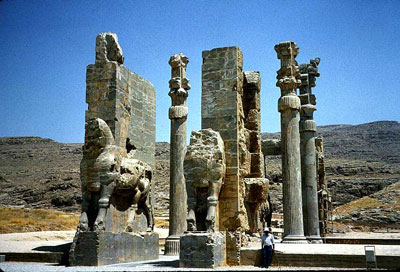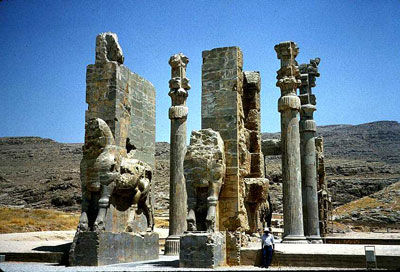Persepolis was the magnificent capital of ancient Iran, when that country ruled most of the civilized world, from Egypt to Central Asia and from Greece to Northern India. (Yes, some of the later pharaohs were vassals of Iran!)
Now comes exciting news that a joint Italian and Iranian archeological team has found Parsa, the gritty working-class district that lay outside the palace walls, where the artisans lived. The Iranian director, Alireza Askari, said:
” two trial trenches brought to light important evidence which suggests that in the Achaemenid and post-Achaemenid periods the area was dedicated to craft activities. In fact, one of the trial trenches yielded a kiln for pottery making, while the other was characterized by the presence of a large number of successive dump pits extremely rich in pottery shards, bricks, charcoal, and bones. Also for this area, the very promising results of the trial trenches suggest that extensive excavations will be carried out in the next season. Being one of the few stratigraphic excavations to have been carried out in the area of Persepolis for the historic period, this activity will allow a comprehensive and fundamental study of the pottery as well as of the other classes of materials recovered for the historic period from the Achaemenid through the Islamic periods, and thus bring a relevant contribution to the knowledge of everyday life in ancient Fars . . .” ‘
For a sense of the magnificence of the original, see Persepolis Recreated:





 © 2025 All Rights Reserved
© 2025 All Rights Reserved